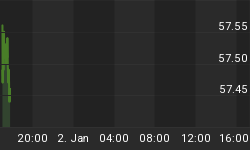Bridgewater Associates is the world"s largest macro hedge fund firm, meaning they have a good handle on the problems in Europe. Some excerpts from a Bloomberg article on the firm"s current outlook:
These days, the view from Bridgewater is dour. They divide the world into two groups: developed debtor nations that are deleveraging and emerging creditor countries that are leveraging up. After years of overspending financed by borrowing, the former are being forced to lower their debt relative to their income levels, constraining spending levels and employment gains.
Developed debtor countries, including Greece, Spain and Italy, that can"t print money to make it easier to service their debts and to make up for slow credit growth will have decade-long depressions and debt defaults.
"We worry about Europe not being able to solve its problems," says Bridegewater"s founder Ray Dalio.

A recent Bloomberg article sheds some interesting light on the current bearish bets in the market. Here are the key points:
U.S. stocks are likely to extend declines because hedge funds have leeway to boost bets against the world"s largest equity market, according to Bank of America Corp."s Mary Ann Bartels.
The adjusted short interest ratio, a measure of potential buying pressure, is 1.5 for the Standard & Poor"s 1500 Composite, down from 2.4 at the end of July and below its 10- year average of 2.4, Bartels wrote in a report dated Sept 5.
"Short interest represents a floor," said Bartels, who ranked third among analysts who study price charts in Institutional Investor"s 2010 survey. "If you have a lot of shorts, you only fall so much, and we don"t have that floor, we don"t have a safety net on the market."
"What we"re most concerned about is the banking system in Europe," Bartels said. "There is no reason to have a very long position with the positioning of the charts," she said. Still, "the level of shorts is nowhere near where we saw in 2008 and 2009" in terms of potential buying pressure.
The S&P 500 made a higher low in August relative to the summer 2010 lows (see green line in chart below). The indicators shown both made lower lows (red lines), which is bearish from a longer-term perspective. According to Dr. Alexander Elder, author of Trading For A Living:
MACD Histogram (blue bars below) works like headlights in a car - it gives traders a glimpse of the road ahead. If the indicator falls to a new low, it shows that the bears are strong and prices are likely to retest or exceed their latest low. Divergences between MACD-Historgram and price only occur a few times a year, but they are some of the most powerful messages in technical analysis.

















